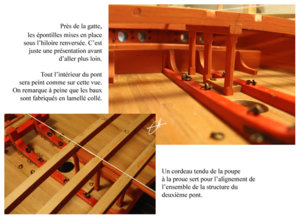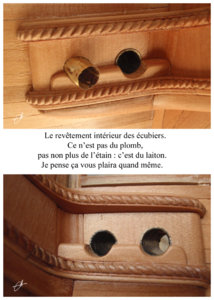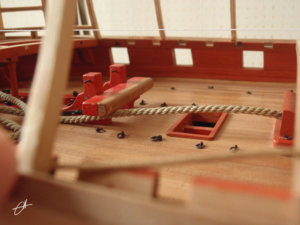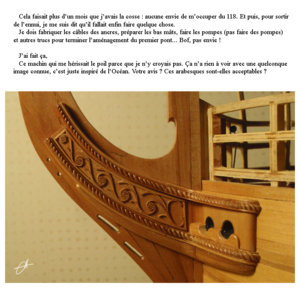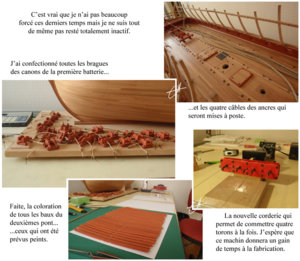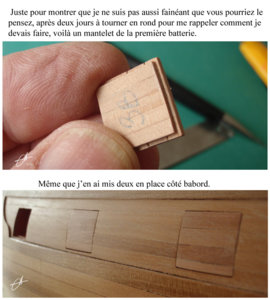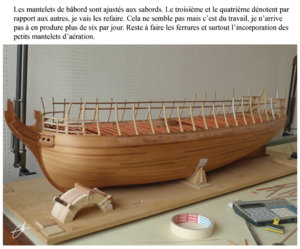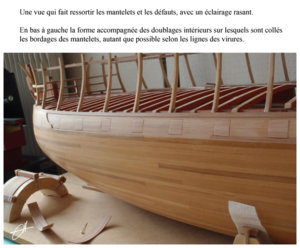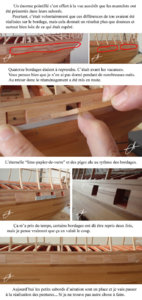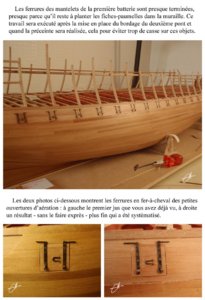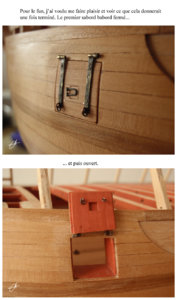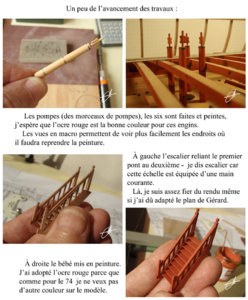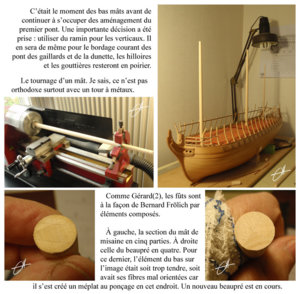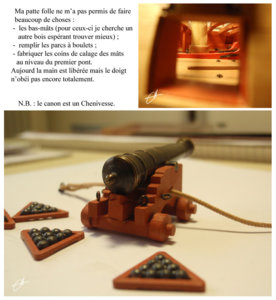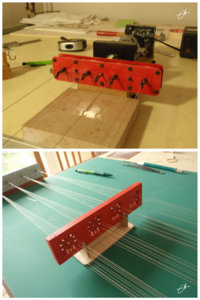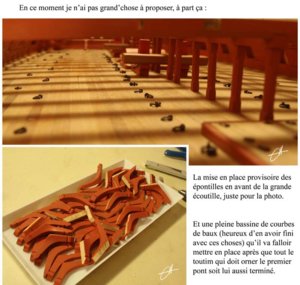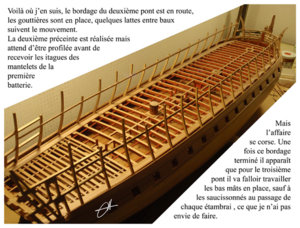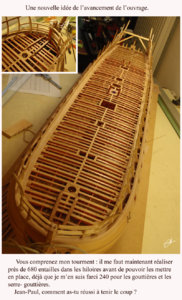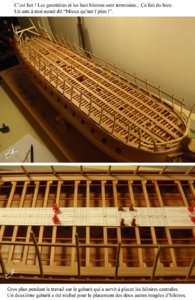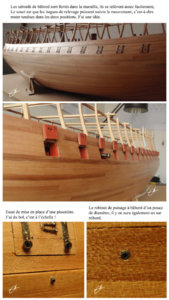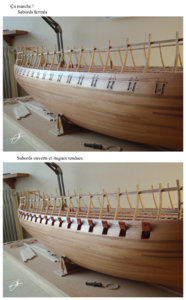Today I want to show the way of research what is possible in a actual life building log, and which explains the comments in the photos better:
and once more sorry for the bad (google) translations......
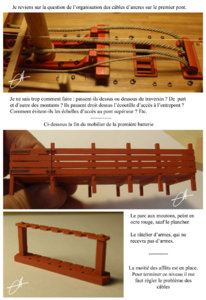
I come back to the question of the organization of anchor cables on the first deck.
I do not know how to do it: do they pass over or under the bolster? On both sides of the amounts? Do they pass right over the hatch to the between decks? How do they avoid ladders accessing the upper deck? Etc.
Below the end of the furniture of the first battery
The sheep stock, painted in red ocher, except the floor.
The weapons rack, which will not receive weapons.
Half of the carriages are in place. To finish this level I have to solve the cable problem
in between Gérard answered in this way:
For cables, they should be more or less "flat" and bumped on the bridge on each side of the uprights, freeing the ladder.
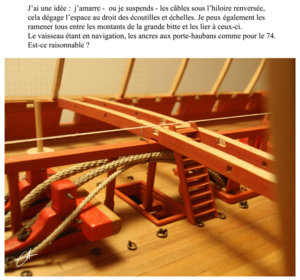
I have an idea: I am docking - or hanging - the cables under the reverse hinge,
this clears the space to the right of the hatches and ladders. I can also bring them all between the big dick and tie them to them.
The ship being in navigation, the anchors to the stays as for the 74. Is it reasonable?
Gérard:
Well it depends on how you present your ship.
Logically, the vessel being at sea, the cables are beaded, rolled up in the hold and the hatchlings closed with their knobs.
If it is likely to wet an anchor, the cables must be laid down and bumped. Even prepare a biture.
If it is wet, a ride on the bittes. See the 74.
Francis:
Well, I reread and re-read the chapter of volume IV of J.B. It is hard to be understood by a person like me.
By cons this interests me, I quote: "Another way to arrange the bitture is to suspend the portion of cable under the second bridge leases while waiting to anchor". It is not far from my proposal!
So this is it. We are going to say that the ship has left for a very small journey (Brest - Portsmouth for example CM model at 1/72 by Francis Jonet 450410), that two of the anchors are at the davit, the legs resting on the foreshore stay holders, like the other non detalingantes given the short travel time. A small bitture (because I don't have a lot of cable length available) waiting, part under the leases of the second bridge, the other in the drip tray.
By cons for indoor bumps, I can not do.
Isn't it beautiful like that? affraid
In the meantime, I'm going to take a very earthly bitture.
Francis:
I understood that for the layout of the bitture (I'm not sure of my shot), but I can't see the "plets" considering the size of the cables of the large anchors; already that these cables cannot be taken by the capstan (cf. J.B.) because of the possible radius of curvature.
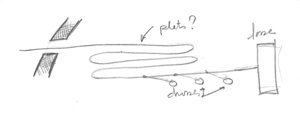
Gérard:
I think the folds are made across the bridge on each side of the cleats of the bittes.
Francis:
I made my decision: no prepared bitture, the cables wisely stored on each side of the bitt, each held by a bump (if I managed to slide my fingers where it should be) or a bridle, the anchors displayed as shown on mon 74. It may not be very orthodox but it can represent a situation between the moment when the anchors were weighed down and the preparation of the bitture.
Personal Remark by Uwe:
Please do not be afraid, that I will now copy all the comments made during the building log......and Sorry to Gérard, that I used your words here.....
But I wanted to show herewith, the intense research in available documents and the specific communication with specialists like Gérard to get a technically reasonable and historical correct model..........
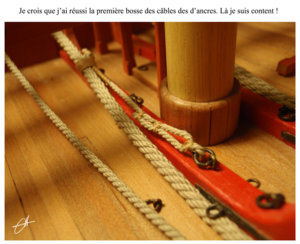
I think I managed the first bump of anchor cables. There I am happy!
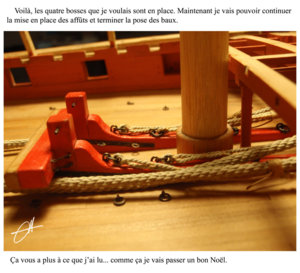
That's it, the four bumps I wanted are in place.
Now I will be able to continue the installation of the mountings and complete the installation of the leases.
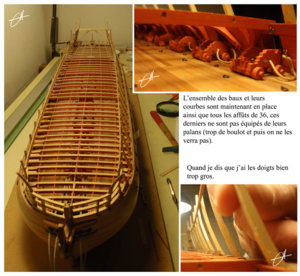
All the leases and their curves are now in place and all the carriages of 36, they are not equipped with their hoists (too much work and then we will not see them).
When I say that my fingers are too big.
 Thank you both!
Thank you both! Thank you both!
Thank you both!

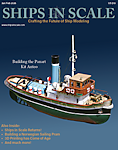

 Thank you both!
Thank you both!


